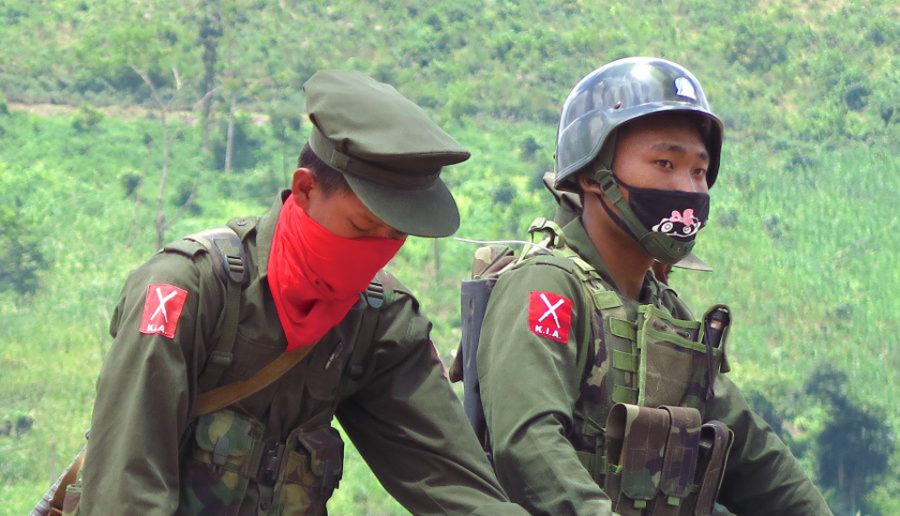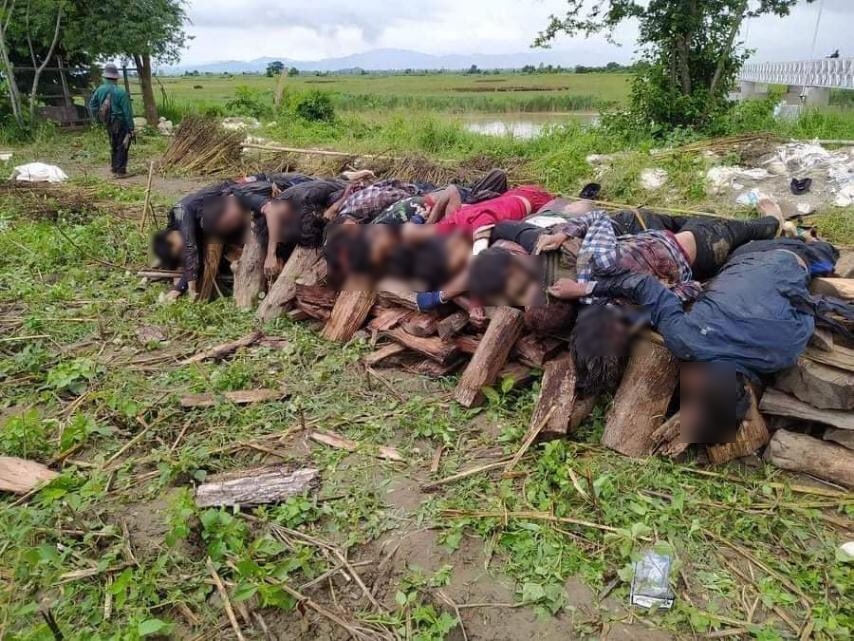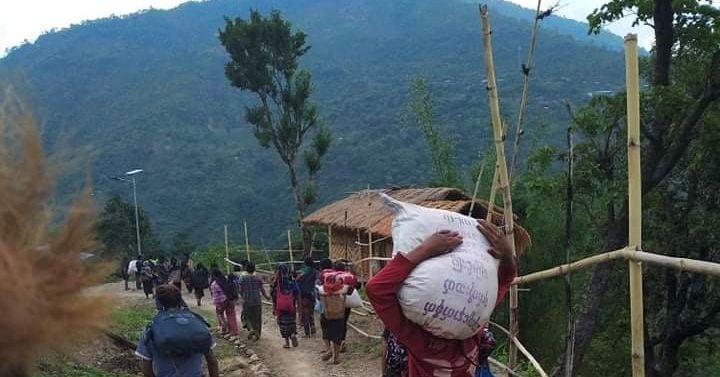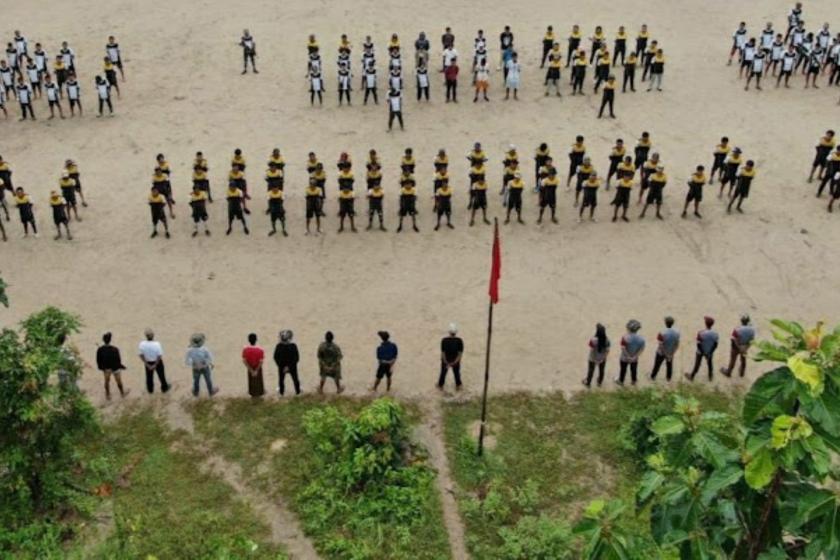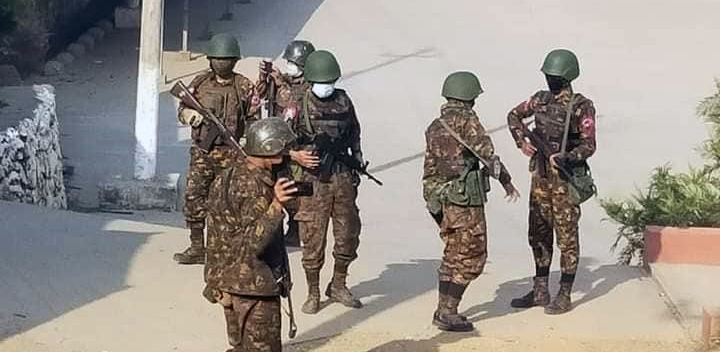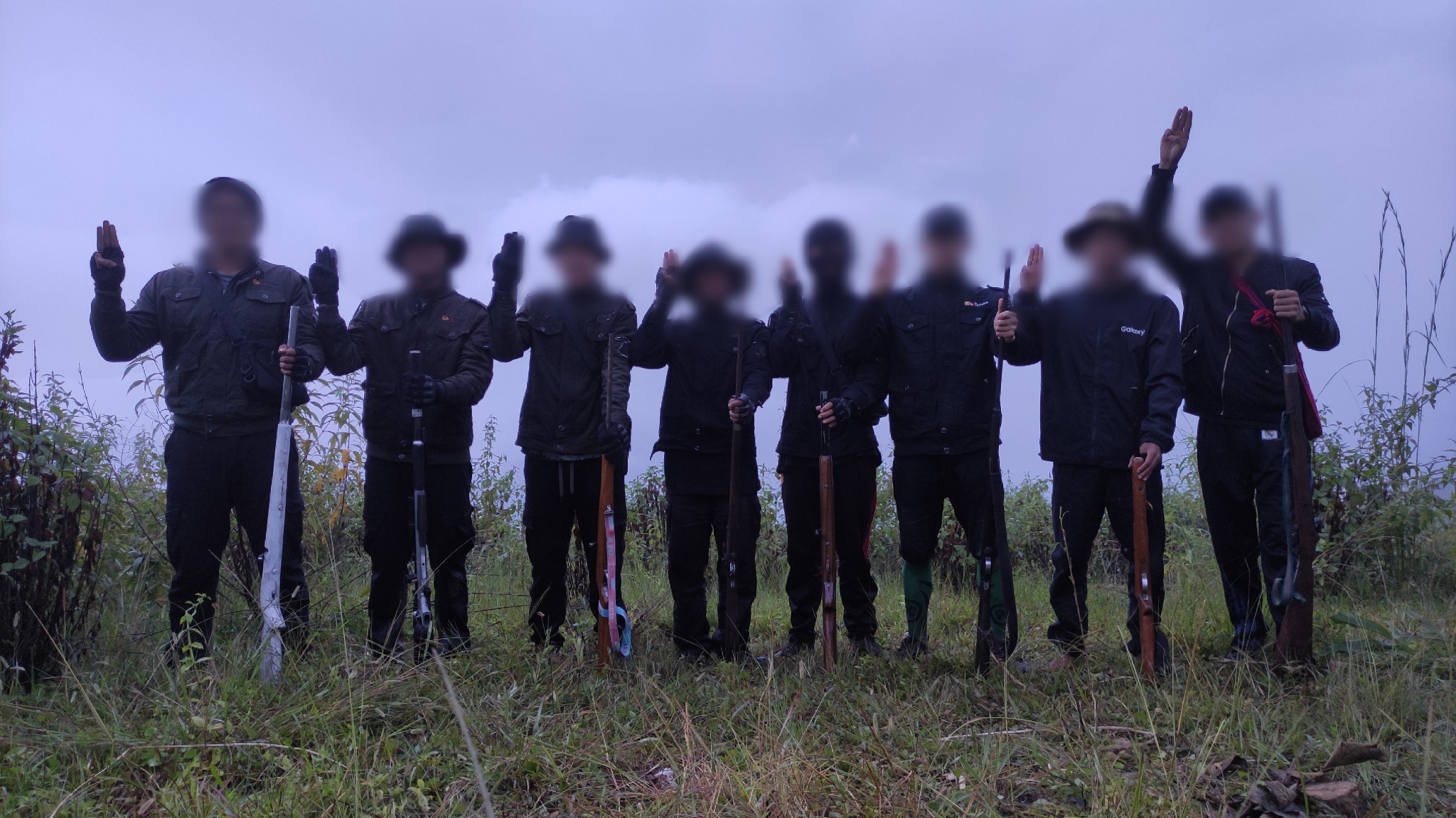The Myanmar army reportedly suffered heavy casualties during a clash with a joint force made up of troops from the Kachin Independence Army (KIA) and local People’s Defence Force (PDF) Sagaing Region’s Katha Township on Monday.
The KIA-PDF alliance attacked the junta’s armed forces in the Moedar area, adjacent to Kachin State and located on the banks of the Irrawaddy River.
Around 40 junta soldiers were killed by the resistance force but neither the KIA nor the PDF suffered casualties, according to a statement released by the defence ministry of the National Unity Government (NUG) later that day.
The NUG did not respond to Myanmar Now’s request for comment.
The military council did not publish any information on the fighting in Katha.
KIA information official Col Naw Bu confirmed Monday’s clash but said he could not confirm the number of Myanmar army troops killed.
“I only heard that the wounded soldiers were being treated,” he told Myanmar Now on Tuesday, adding that the junta’s armed forces had withdrawn from the area where the battle took place.
The Katha-based chapter of the PDF issued a statement on Monday requesting that the public and news outlets refrain from posting about the clash on social media, and to wait for official updates released by the NUG’s defence ministry.
They also urged people to exercise caution when travelling along the Katha-Bhamo road.
The KIA and local PDF groups have previously
collaborated in attacking the Myanmar army in Katha, allegedly killing some 180 junta troops during a week of fighting in July.
Fighting has intensified in multiple areas across Myanmar since the NUG’s declaration of a full-scale “resistance war” on September 7, including in Sagaing and Magway regions and Chin State.
The NUG reported that around 40 junta soldiers were killed in the clash in Katha Township

www.myanmar-now.org
At least six junta troops were killed in Sagaing Region on Thursday when two military vehicles hit landmines planted by the resistance, according to the Chaung-U People’s Defence Force (PDF).
The vehicles, heading from Mandalay to Monywa, were struck by the Chaung-U PDF and the Monywa-based guerrilla group calling itself “Thanmani and members” in eastern Chaung-U Township at around 8am.
The Chaung-U PDF released a statement later that morning that the left sides of both military vehicles were destroyed and that ambulances arrived at the scene shortly after the blast occurred.
“The cars were destroyed. The military has now started conducting inspections in the region,” a Chaung-U PDF leader said.
An army helicopter also arrived at the scene shortly after the explosion to survey the area and presumably to search for members of the resistance groups, according to Thanmani, the leader of the group under the same name.
“Helicopters have been hovering around... I’ve heard they were going to comb through the entire area,” he told Myanmar Now. “We actually set up nine landmines. Right after the first one exploded, the soldiers came out of the vehicles, panicking. We set the remaining mines off after they got out, so we managed to deal them a great amount of damage this time.”
The Chaung-U PDF has also announced that they will be forming alliances with multiple guerrilla groups to collaborate in overthrowing the military dictatorship.
Five members of the Chaung-U PDF
were killed in a clash with the junta’s armed forces on September 16 in Methekyo village, two miles west of Chaung-U town. After a military-owned Mytel telecommunications tower was blown up by resistance forces around 5 miles west of Chaung-U one day earlier, the military began raiding villages in the area.
In retaliation, the local PDF launched a guerrilla attack against the junta’s troops outside Methekyo in what became an hour-long battle.
A 10-second video believed to have been shot in Methekyo village after the clash has since gone viral on Facebook. The video shows a young man with guns being ordered, presumably by junta soldiers, to kneel next to four dead bodies covered in mud and shout “This is the Chaung-U PDF.” He was arrested.
The military council’s troops attacked the local PDF from both land and air during the attack.
An instruction letter from the junta authorities ordering that the security around Mytel towers be tightened, as well as a photo of soldiers setting up landmines near the towers, have since been circulating on social media.
Local guerrilla groups planted the mines on a road in the Sagaing Region township after five members of the Chaung-U PDF were killed by the junta in a clash days earlier

www.myanmar-now.org
Another 30 junta police officers and soldiers in Chin State have joined the nationwide Civil Disobedience Movement (CDM) defying military rule over the past two weeks, since the declaration of a People’s Defensive War against the military regime by the parallel National Unity Government (NUG) on Sept. 7.
That means a total of 350 junta police and 21 soldiers have gone on strike against military rule in Chin State since the Feb. 1 coup, according to the Chinland Defense Force (CDF), which consists of ethnic Chin civilian armed forces across the state.
Since late April, the military regime has faced intense resistance from the civilian fighters of the CDF teams, most of which are armed with homemade traditional hunting guns. The CDFs have managed to inflict heavy losses on junta forces in a series of firefights.
In a speech to the country on Sept. 7, the NUG’s acting president, Duwa Lashi La,
urged anyone serving under the regime including soldiers and police to leave their jobs, while calling on all citizens to revolt against the rule of the “military terrorists” led by coup leader Min Aung Hlaing in every corner of the country.
Since the declaration, 21 police and nine soldiers in Chin State have joined the CDM through the Chinland Defense Force, according to the group.
Of them, three soldiers brought firearms along with them in joining the CDM, a spokesperson for the CDF told The Irrawaddy on Thursday.
The junta forces have joined the CDM as they realized the military has become the most unpopular institution in the country, and after witnessing the revolution of the people against the junta, according to the CDF.
“The terrorist group [junta] which has seized power from the elected government, realized itself that the international community does not recognize them [as the legitimate government]. So, junta soldiers need to realize that point too,” the spokesperson said.
He also said that junta forces need to decide quickly whether they intend to protect the interests of the junta or join the CDM, as they are among the main targets of the revolution now that the NUG has officially declared war.
The Chinland Defense Forces have been inviting junta soldiers to join the CDM by promising safe accommodation and a proper daily wage to those who do.
The Chin civilian armed forces have already announced that they will award 5 million kyats (US$2,713) to junta troop who bring firearms and rounds along with them when defecting from the military. Those who bring heavy weapons with shells will be awarded 10 million kyats ($5,427).
They also said government officials also would be awarded 5million kyats if they bring a vehicle from their offices while defecting to the CDM.
A video shows civilian resistance fighters of the CDF encouraging surrounding junta soldiers to join the CDM during a firefight in Chin State, promising them safety and rewards.
Meanwhile, some striking police officers are joining the Chinland Defense Forces in their fight against the military regime’s forces in Chin State.
As well, 320 police who defected from the junta-controlled Home Affairs Ministry after the coup have
formed a police force that will work together with anti-regime groups to fight military rule in Kayah State.
In Myanmar, almost 410,000 government staff
have gone on strike against the military regime since February.
Among them, around 2,000 junta police and soldiers have also joined the CDM, as of August, according to People’s Embrace, a group helping security forces personnel who are refusing to work for the regime.
Since the declaration of the People’s Defensive War on Sept.7, 15 to more than 30 junta police and soldiers have contacted the CDM to join it each day, the NUG said.
Twenty-one police and nine soldiers have joined the Civil Disobedience Movement since Sept. 7; three brought their weapons with them, the Chinland Defense Force said.

www.irrawaddy.com
Myanmar’s underground National Unity Government (NUG) is stepping up efforts to provide weapons and other support to anti-junta armed groups across the country following calls from the guerilla fighters for more assistance, a senior defence official has told Myanmar Now.
Naing Htoo Aung, the secretariat of NUG’s defence ministry and also its spokesperson, said plans were underway to establish a chain of command alongside a system to connect the numerous self-organising groups that have sprung up to resist the junta in recent months.
“We have started providing our PDF comrades and local resistance fighters with defence equipment to protect the public,” he said.
“Because there are a lot of PDFs and local resistance forces scattered all over the country, it’s hard for the defence ministry to connect them all in such a short period,” he added. “However, we are trying to make the most out of the little time that we have.”
The NUG on September 7 declared a “resistance war” against Min Aung Hlaing’s coup regime after officially forming the People’s Defence Force (PDF) in May.
But the majority of attacks against junta targets appear to have been carried out by local groups independently of the NUG, and many PDF chapters say they have received little material support from the shadow administration so far despite badly needing it.
Local PDFs say the biggest challenge they face is an imbalance of firepower. An officer from an urban guerilla in central Myanmar said his organisation needed military training and advice, weapons, and greater collaboration with the NUG.
“There are so many basic things we need, including food supplies and even shoes,” he told Myanmar Now. “We are barely surviving on the donations of the people. The most essential requirement is weapons.”
The NUG has not disclosed any details about how it plans to establish support networks or a military hierarchy that would enable different groups across the country to coordinate their attacks.
Naing Htoo Aung said that his ministry would reveal more soon. “The next stage of the revolution is coming inevitably. The people will get to see the changes that are coming very soon,” he said.
Junta spokesperson Zaw Min Tun told BBC Burmese earlier this month that PDF chapters in Yangon and Mandalay have stepped up attacks since the NUG’s declaration of war.
Junta soldiers have routinely responded to PDF attacks by
collectively punishing civilians with torture, arson and killings.
A member of the recently formed Karenni National Defence Force (KNDF) said that his group has collaborated with the NUG, but declined to disclose details.
“We are on good terms and are working together on military and other necessary actions,” he said. “We have also received some good advice from the NUG. We can’t disclose exactly what kind of support we are getting from them but it is sufficient.”
The NUG said in May that the PDF would eventually become a Federal Union Army that, it is hoped, will include long-established ethnic armed groups.
But that will involve rebuilding trust with numerous groups who felt betrayed by the Bamar-majority National League for Democracy government, whose members played the key role in founding the NUG after the February coup.
“We are constantly in discussion with ethnic armed organisations,” Naing Htoo Aung said, “and because we have considered all the ethnicities’ wellbeing as our central interest, positive improvements have been achieved.”
Latest news & insightful features on Myanmar

www.myanmar-now.org
Fighters from the Pa-O National Army (PNA) teamed up with the Myanmar military in Shan State last week to capture a base from local resistance fighters, members of the anti-junta group have told Myanmar Now.
A coalition force of at least 100 pro-junta troops attacked members of the Aungban Special Defence Force (ASDF) at their temporary base near Nawng Ye village, about seven miles from the town of Aungban, on September 18, the ASDF said.
The resistance fighters were forced to retreat amid a barrage of explosions and gunfire that started at around 8am, an ASDF member said. “They employed both snipers and mortars. We had to retreat after an hour as they had much more firepower than us,” he said.
The ASDF suffered no casualties but killed two pro-junta soldiers and injured another three during the clash, he said. Myanmar Now was unable to independently verify those figures.
The junta’s coalition fired at least 50 shells at the base during the clash and burnt it down after the resistance fighters fled, he added.
“[They] exchanged shots on the hills. The traffic was blocked, it’s now back to normal though,” said a witness who was on the road connecting Aungban to Pindaya during the clash.
The ASDF says it has formed alliances with local people’s defence forces based in Taunggyi, Aye Thar Yar, Shwe Nyaung and Kalaw.
The day after the clash, junta forces detained some Nawng Ye villagers and forced them to act as guides in the area, a member of a local social services organisation said. The villagers have since been released but people in the area are still very worried, they added.
Junta forces have been carrying out strict security checks on roads in Aungban, Kalaw, Pindaya, Ywar Ngan and Taunggyi in recent days.
Two other sources in Aungban said they estimated that about 200 military and PNA troops were stationed in the villages of Nawng Ye, Loi Sawng, U Hmin and elsewhere, and have been looking for local resistance fighters in the surrounding forests.
The ASDF member said the resistance forces are in a safe place. “We’re keeping our spirits up although we lost one of our bases. We’re going to come back stronger. We’re not going to give up,” he said.
The junta has not commented on the clash and the PNA could not be reached for comment.
In August, the coup regime began asking junta-aligned armed groups in southern Shan State–including the PNA and the Mat Kyeng (Marrkieng), Nayai, Nar Pwe and Homein militias–to
supply reinforcements to the Myanmar military.
Earlier this month the ASDF claimed responsibility for the bombing of Mytel communications towers, a township administration office, a police station and the house of an alleged military informant. Myanmar Now was unable to obtain further details about the attacks.
The Aungban Special Defence Force had to retreat but said it killed two soldiers from the junta’s side during the clash

www.myanmar-now.org
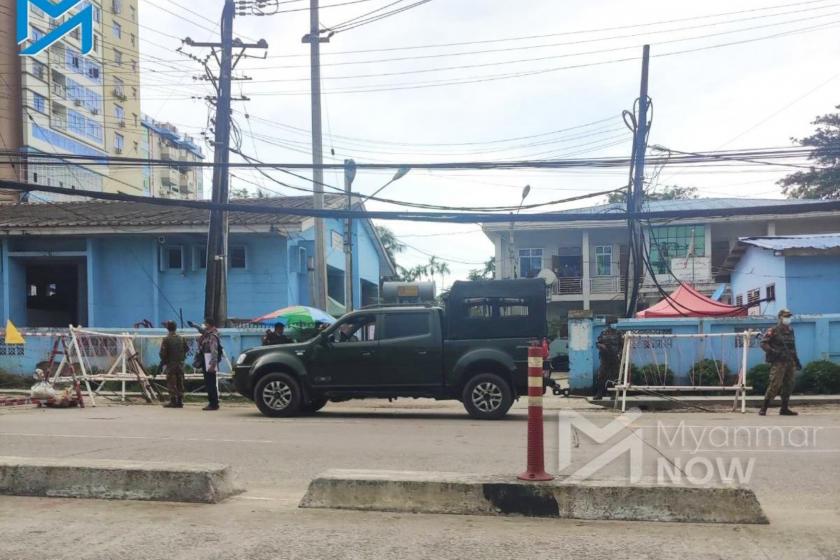
 www.myanmar-now.org
www.myanmar-now.org



